A thousand unknown faces in a trove of Hackney pictures
- Published
What is thought to be the largest collection of images from a High Street photographer in the UK is being digitised - but, as Damian Zane reports, only a few details are known about who features in Ron Gibson's 150,000 photos from the London borough of Hackney.
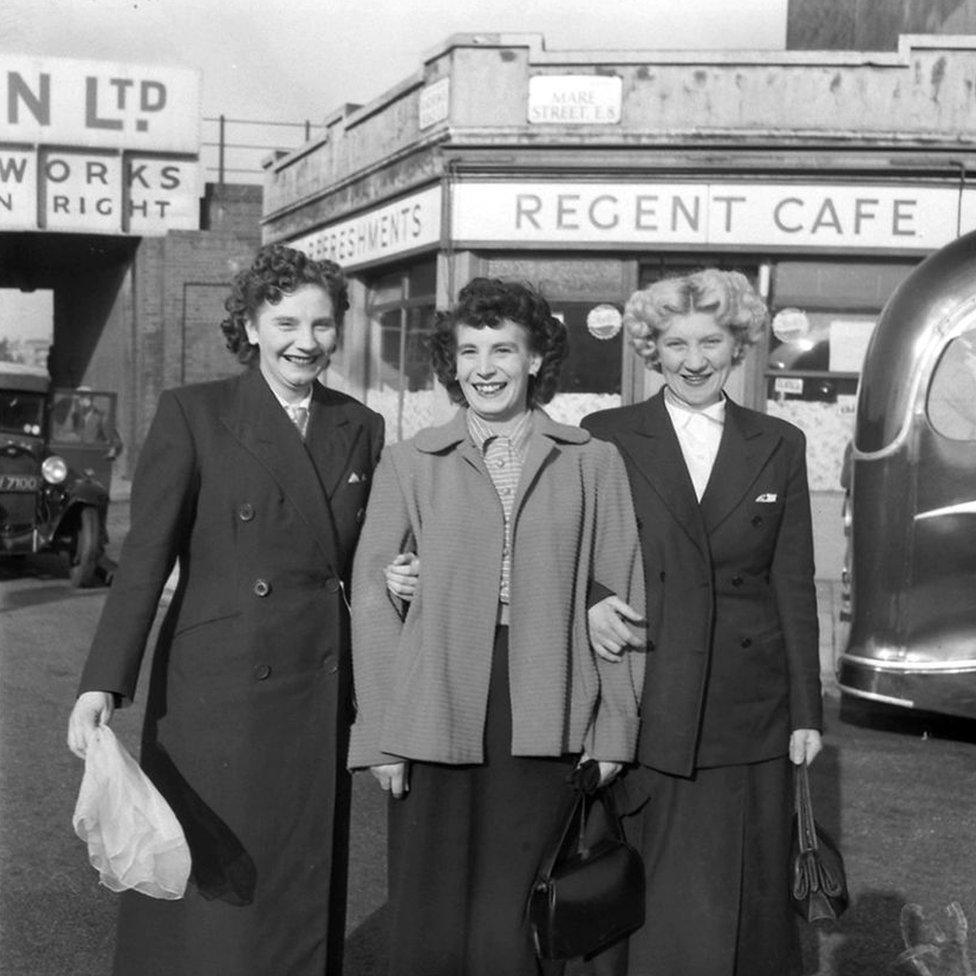

Every picture is tantalising.
The proud smile, or nervous look, or serious stare hint at an untold story.
Many of the names have gone but these frozen moments point to both an individual's history and that of one of the most diverse places in Britain.
The man behind the camera was an accidental historian.
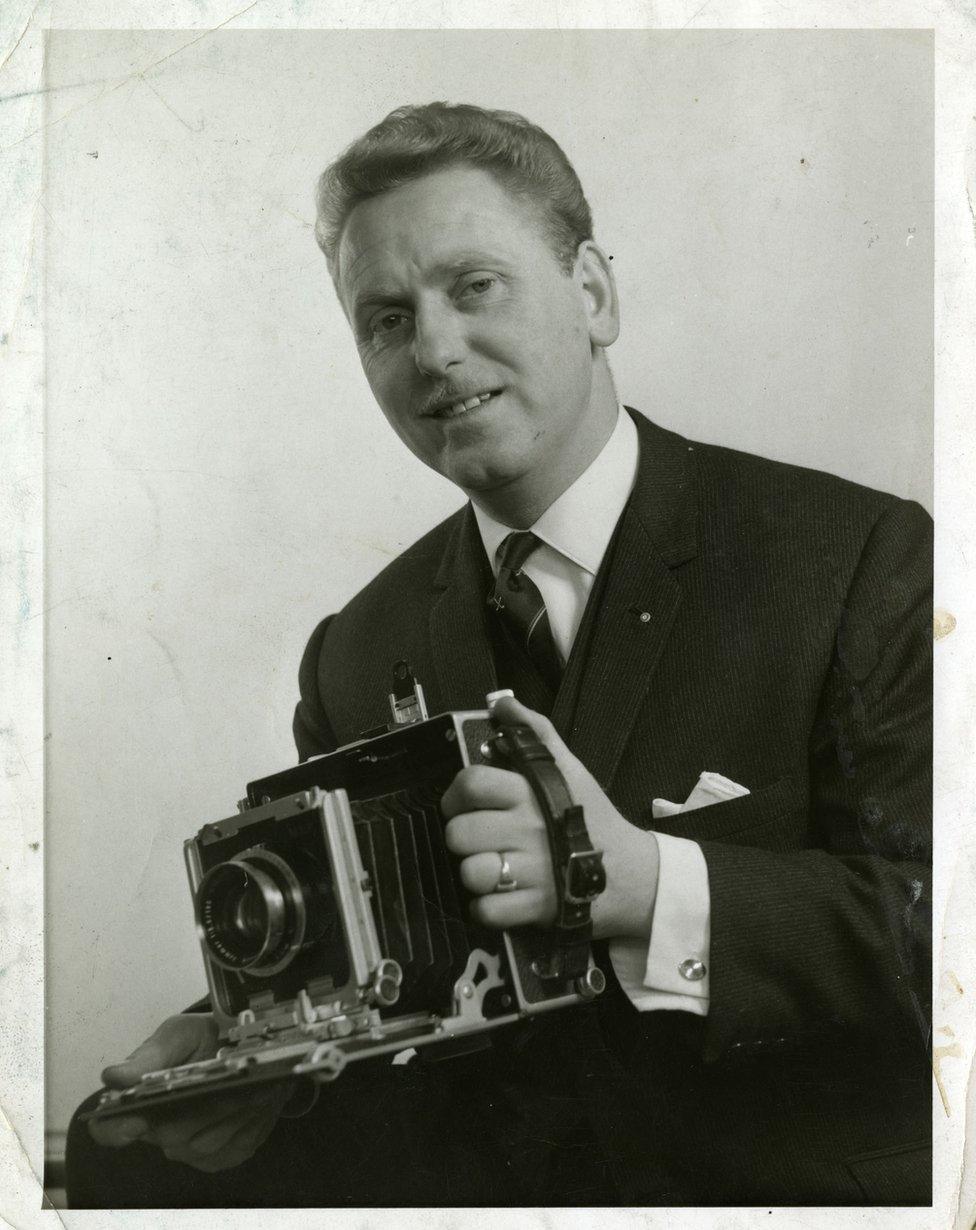

For three decades from the early 1950s, from his base in a shop on one of Hackney's main roads, Ron Gibson photographed hundreds of weddings, work parties, Bar Mitzvahs, outings and christenings. Also, people came to him for individual and family portraits, recording key moments in their lives.
Gibson was a meticulous record-keeper and the archive of negatives stayed intact in a cupboard in the studio even after he sold his business on.
But in the main, the log-books linking the images to the people featured have been lost.
Hackney Archives, which holds the collection, has been sharing images in the hope that people who recognise themselves or their friends and family members will come forward.
Some have been tracked down.
Ray Potts
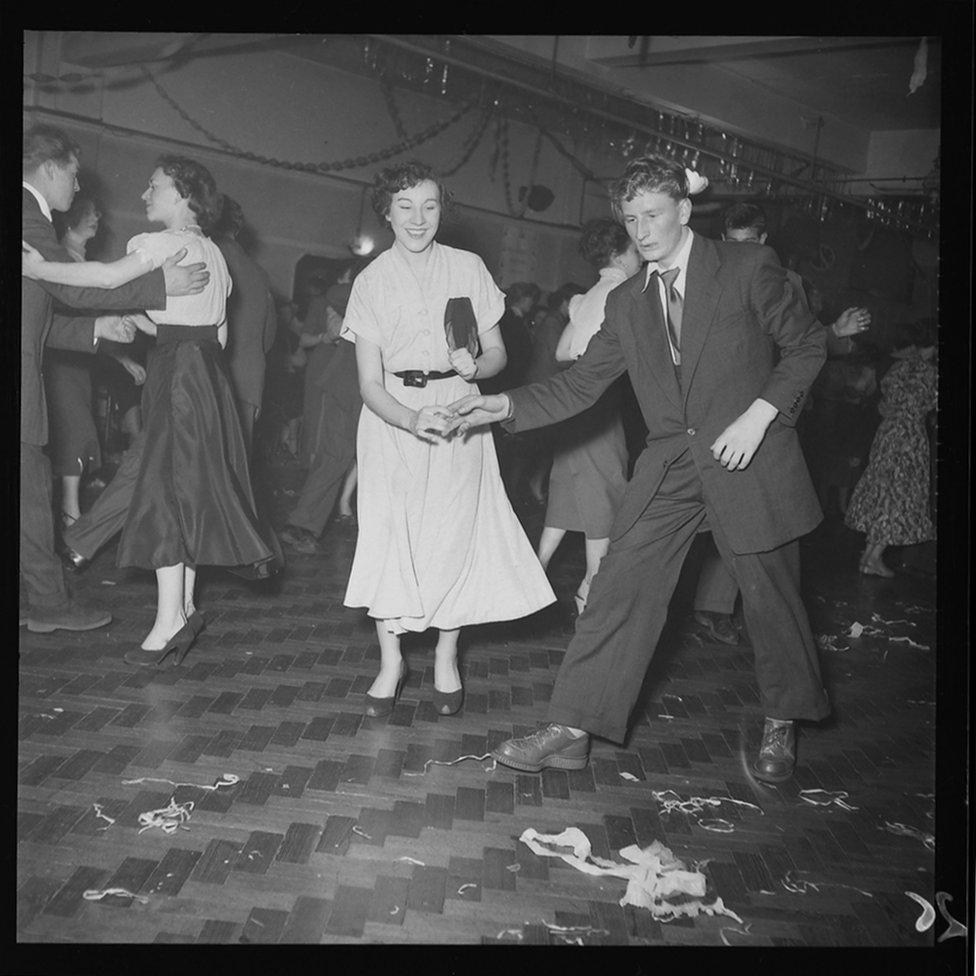

Ray Potts still remembers the blue windowpane check suit and brown brothel-creeper shoes he wore to a party night at Barrie's dance hall in 1952.
"If you didn't have a smart suit and a clean shirt, you never got a girl," he says. "They'd never even look at you."
He would get two suits made for him a year, putting aside money at the tailor's every week to pay for them.
Capturing the atmosphere at Barrie's, above a clothes shop on one of Hackney's main shopping streets, was an early commercial job for Gibson, who was 24 at the time.
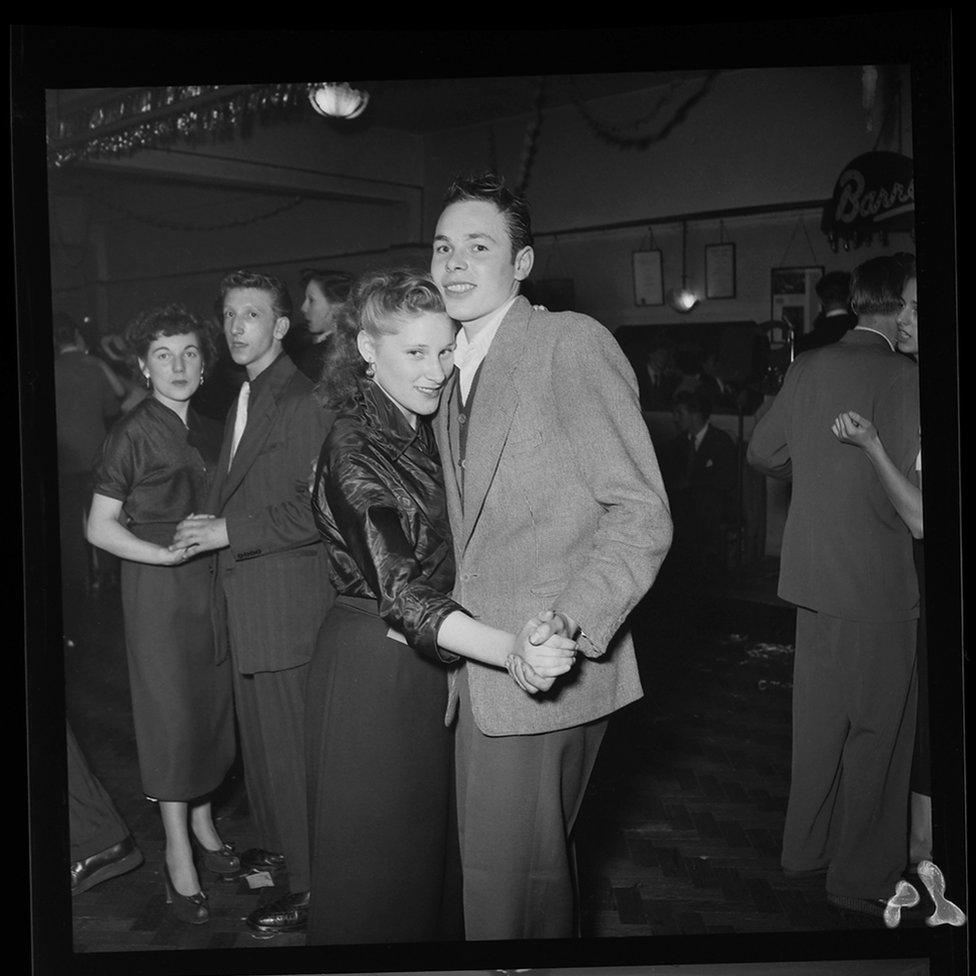

Dance-halls dominated the social scene in Britain from the 1930s, reaching their zenith in the 1950s, and Gibson's pictures, encapsulating the fun, fashion and romance, make it easy to imagine what a night there could have been like.
Ray, 17 when the pictures were taken, would go to the club up to five times a week and he learned to foxtrot, waltz and, most importantly, jive - the dance craze that swept the country in the early 1950s.
Knowing the moves was also a vital ingredient for a potential romance.
"Music has always brought youngsters together," Ray says, "and the better dancer you were, the more chance you had of getting involved with a girl."
Later in the decade, after finishing his national service, which took him to Korea and Egypt, Ray went back to Barrie's, where he met Jean Perry. They married - and 60 years on, they are still together.
Huntley Thompson
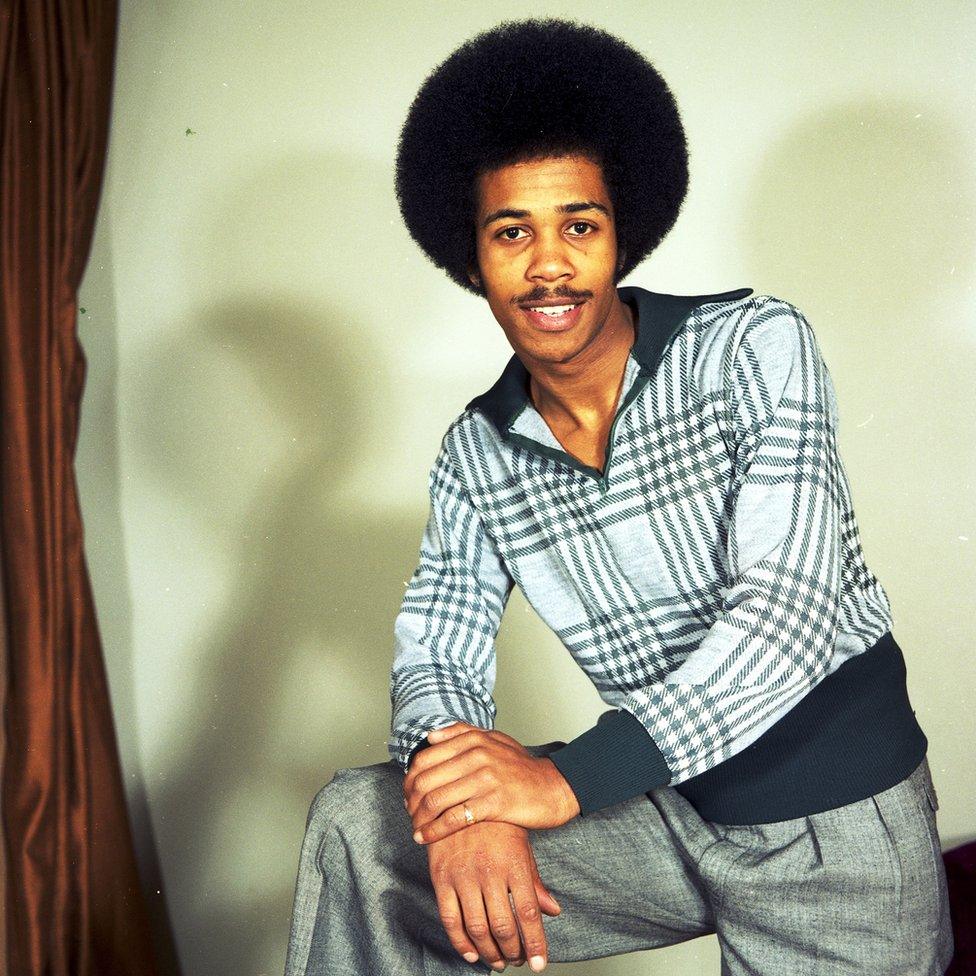

Looking good was also important for Huntley Thompson, who had come from Jamaica as a child to join his parents in Hackney in the early 1960s.
Nearly 20 years after Gibson was snapping the young revellers at Barrie's, a well-dressed Huntley walked into the photographer's studio on Lower Clapton Road.
He was part of a circle of friends who had their photos taken on a regular basis. He reckons Gibson photographed him at least 20 times.
"Because it was the only means of getting your photos done, we all went to Gibson," Huntley says.
"All my friends were very much into fashion. We would like to show off by going up there with the latest clothes.
"It was a fashion statement. You needed to look good for the photo."
Everyone in Hackney would have had their photo taken by Gibson at some point, Huntley reckons.
As a child in the 1970s, Gibson's daughter, Lisa-Jayne Baker, helped her father out on Saturdays and can remember the queues of people waiting to get their photos done.
"It was great fun," she says.
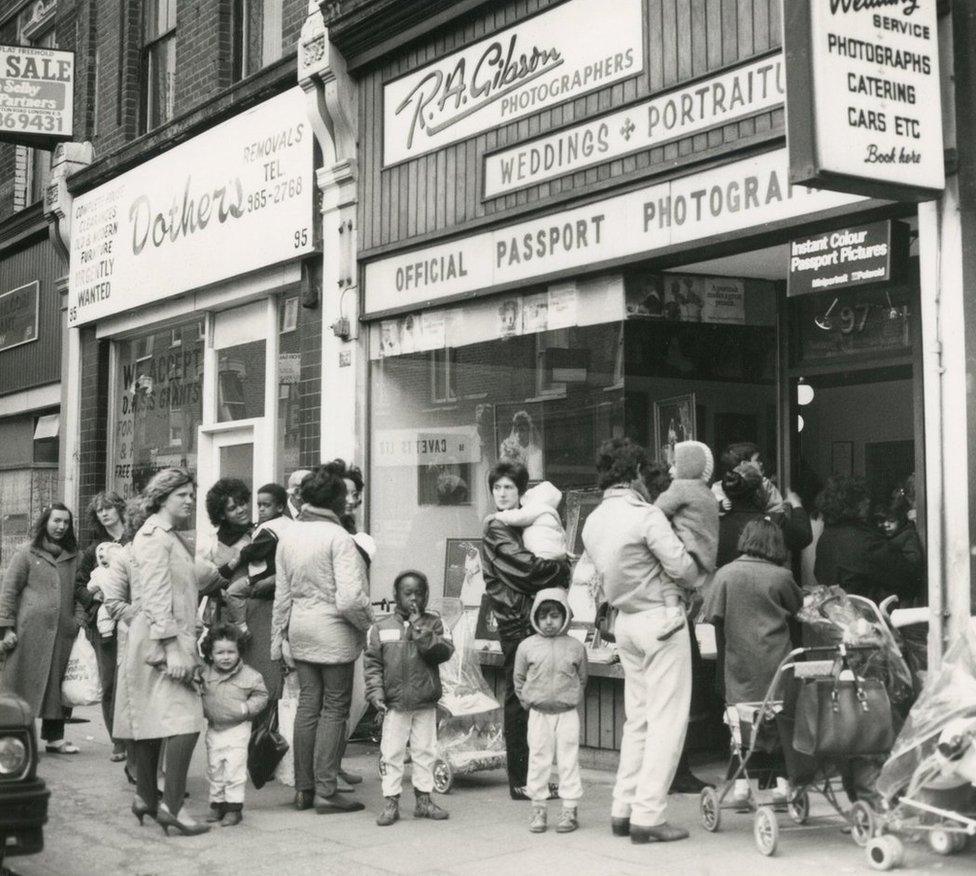
Her father was very popular with people from the Caribbean community, who would bring food as presents at Christmas time and throw impromptu parties in the studio.
Lisa-Jayne says he played a big part in preserving significant moments in their lives.
"He had done their wedding photographs, photographs of their children, the children's christenings and weddings," she says.
"My dad thought of himself as a custodian for other people's memories. The photographs didn't belong to him. He was just looking after the negatives."
He also inadvertently became a custodian of the memory of the borough.
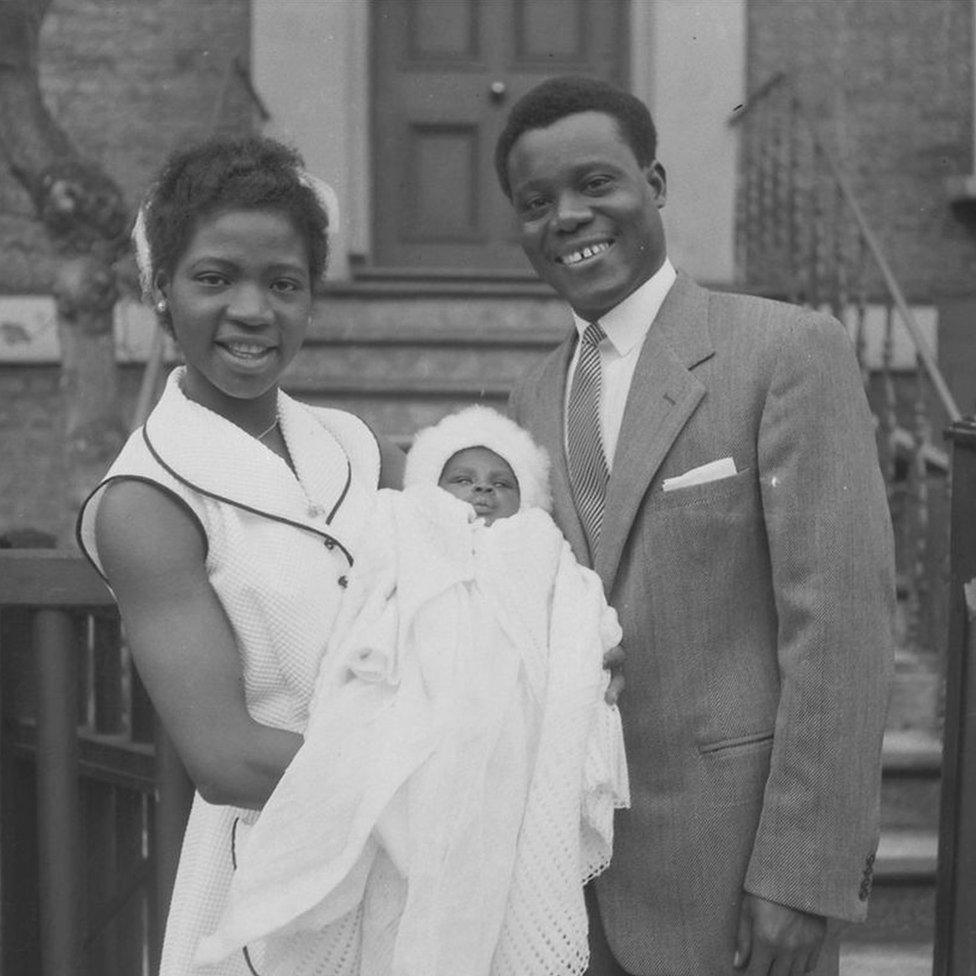
"As you go through the collection, you can see how Hackney changes," says Lisa Peatfield, who has been in charge of the Gibson project at Hackney Archives.
"New communities move into Hackney after the Second World War.
"When you look at the photos in the 50s, almost entirely everyone is white. There's a strong Jewish community you can see in the photos of the weddings and Bar Mitzvahs.
"But as you shift into the late 60s and 70s, the people in the photographs are mainly African, Caribbean or Asian.
"So as populations move in and out of Hackney, they move in and out of the photographs as well."
Kehkashan Nawab
For most of Gibson's subjects, the photograph was a fleeting moment, at best half remembered, but for Kehkashan Nawab it was a defining point in her life.
She can recall in great detail the day in 1978, at just 15, when she went along with two of her mother's best outfits to RA Gibson.
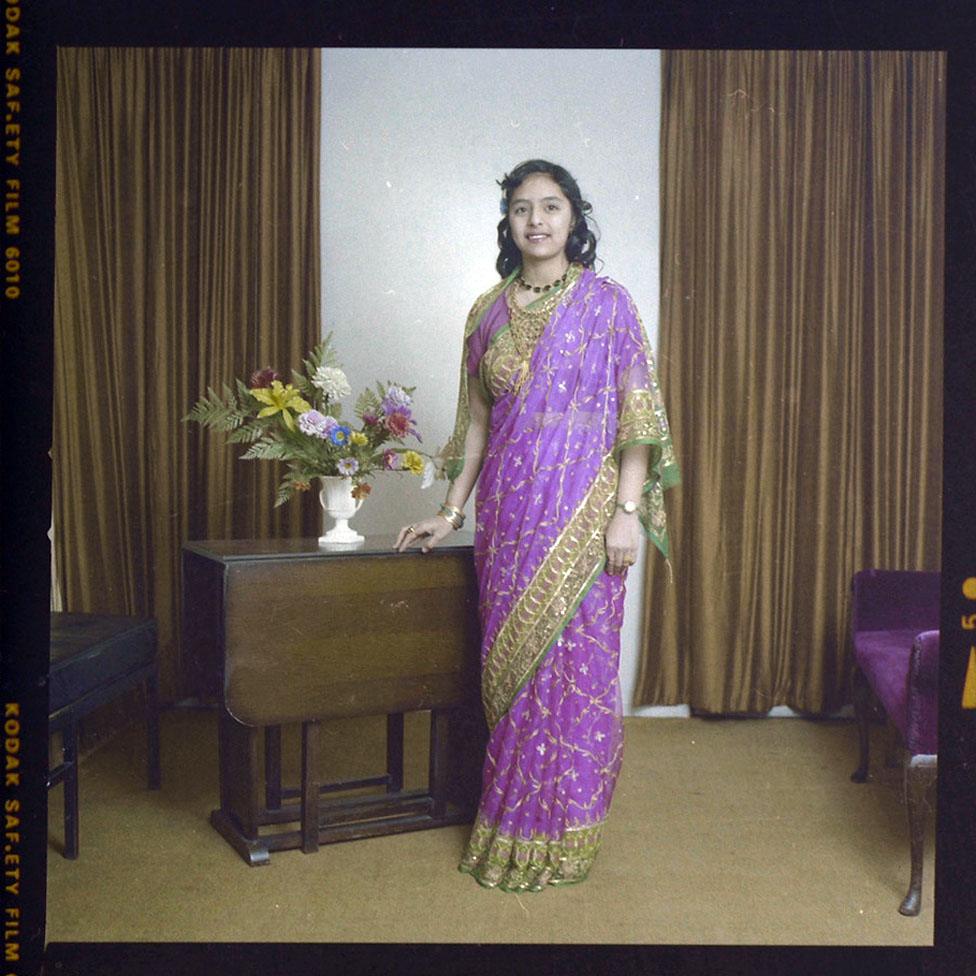

A picture was to be taken and sent to India to help her find a suitable husband.
Her father, an Indian Muslim who had migrated in 1956 to study, was keen she marry someone from her community.
She had been born in London and grown up in Hackney but she says there was a lack of potential bridegrooms living in the area.
In her mother's high heels and gold jewellery, designed to make her look more mature, she was photographed in two outfits.
"I had to dress looking like a lady, so I wore my mum's saris because I only had children's clothes," she laughs as she looks at the prints 40 years later.
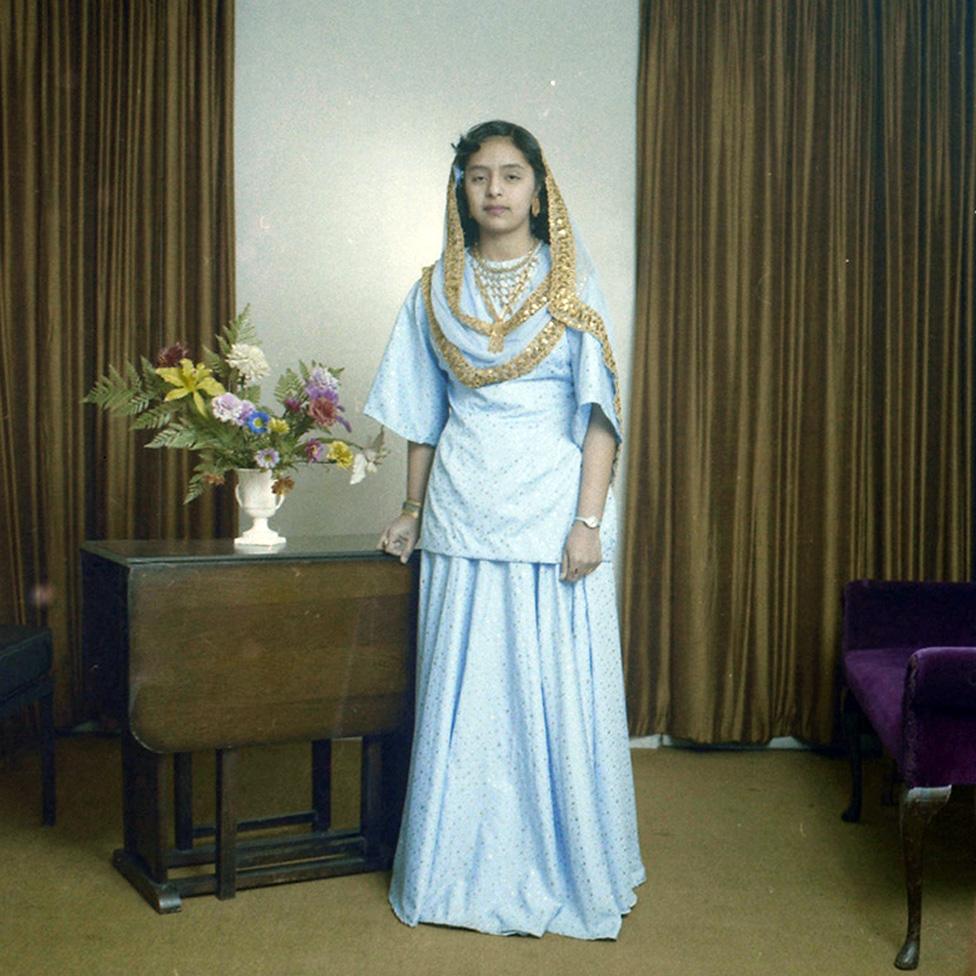

They settled on the picture of her in the gold and pink sari, as she was squinting in the other one. The portrait was then dispatched.
A number of suitors did come forward. "I'm not lying, they all said, 'Yes', they all thought I was beautiful," she laughs again.
Kehkashan approved of some of the matches but the plan changed when an Indian tenant of her father's in a property he owned asked if he knew anyone he could marry.
Being religious, Kehkashan's father saw this as a sign from God and agreed he should marry his daughter.
Gibson's photo was then sent to the potential fiance's parents in India, who approved of the wedding.
At 16 she was married and at 17 she had a baby. But this is not a story of lifelong love. She says her husband was unwilling to be a father at that time and left her and moved to the US.
Adele Lewis
Photographing weddings was the mainstay of Gibson's business. The Hackney Archives estimates 40% of the images in the collection are wedding pictures.
Adele Lewis was 19 when, in 1962, her brother got married at Brenthouse Road synagogue.
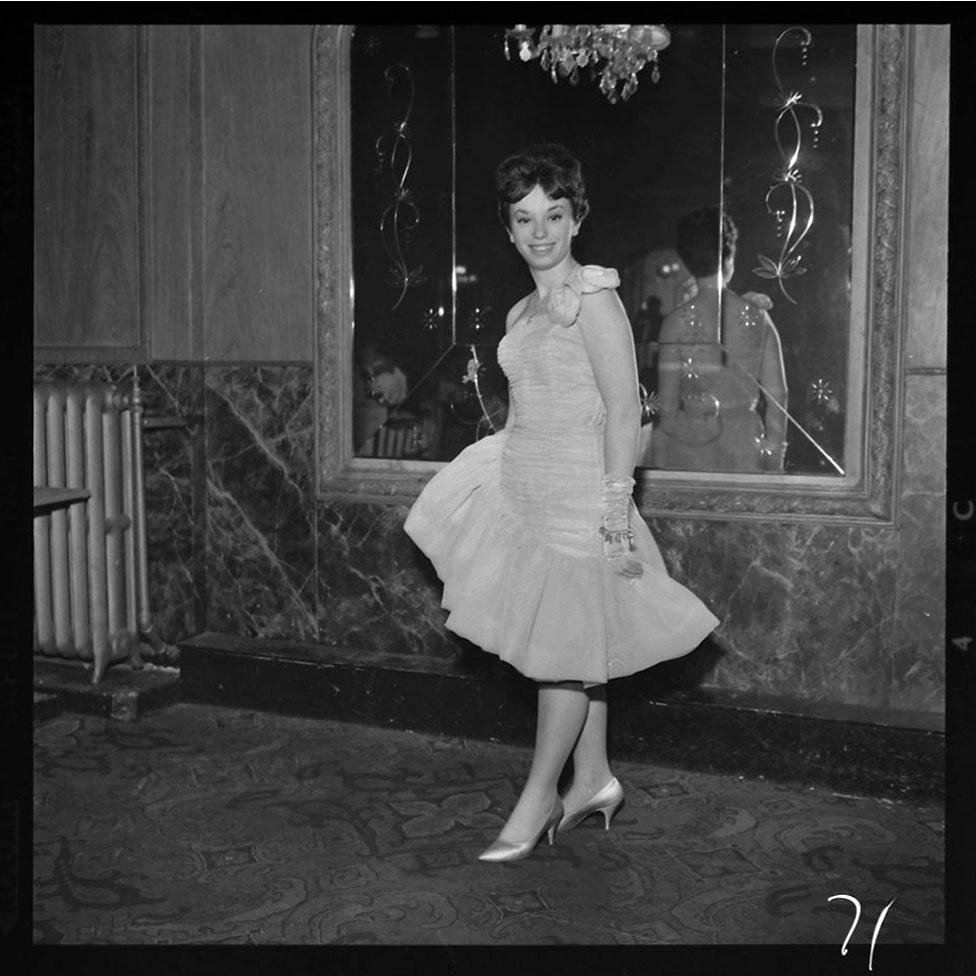

It was one of the larger synagogues that dotted the borough at the time, a sign of the size of Hackney's Jewish community.
"It was a wonderful day," she says, "it was all wonderful."
The bride's family lived opposite the synagogue.
"It was the usual thing then that all the women went to the bride's house," Adele says. "The bride's parents used to make a table with food, so people could come round and have a drink and eat and see the bride."
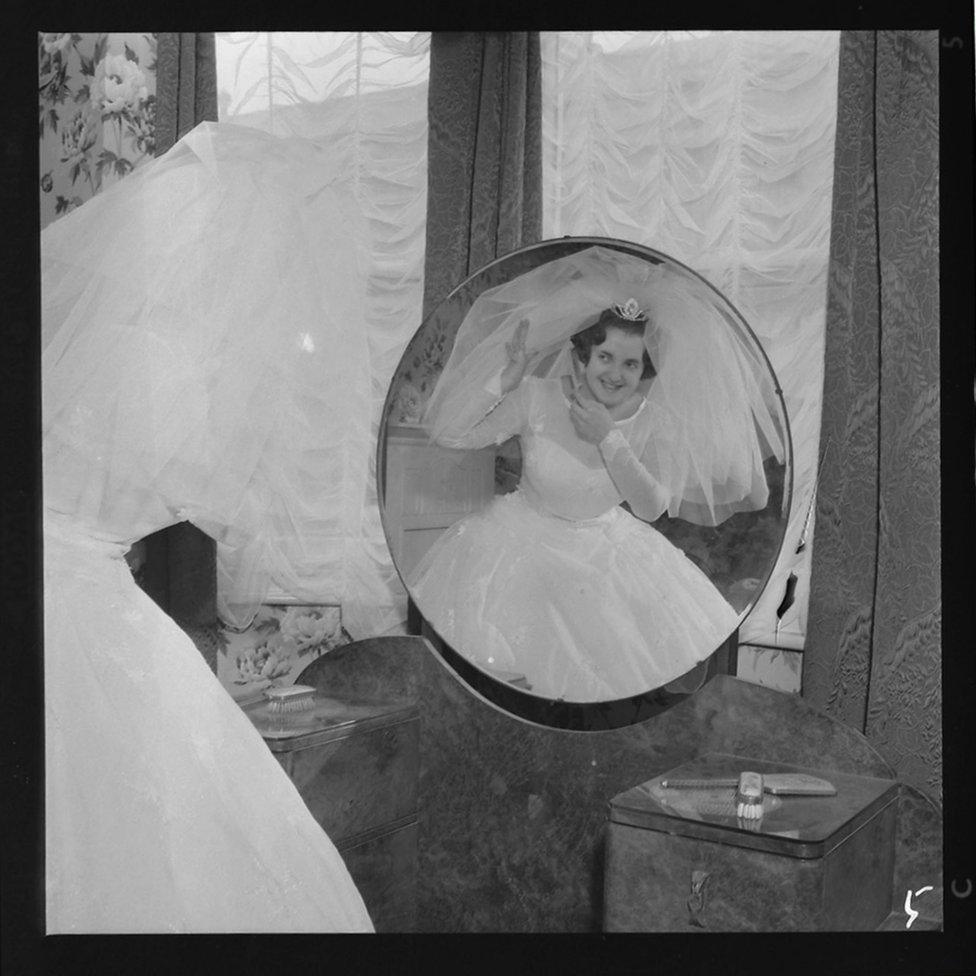

Gibson's wedding pictures followed a formula and there was always a set done of the bride getting ready for the wedding. The images offer an insight into the interiors of the homes of people who did not often feature in the magazines of the era.
The wedding day was also a chance to taste the luxury life.
"Even though [the bride] lived opposite, she insisted on having a car. She got in one side and out the other side," Adele says.
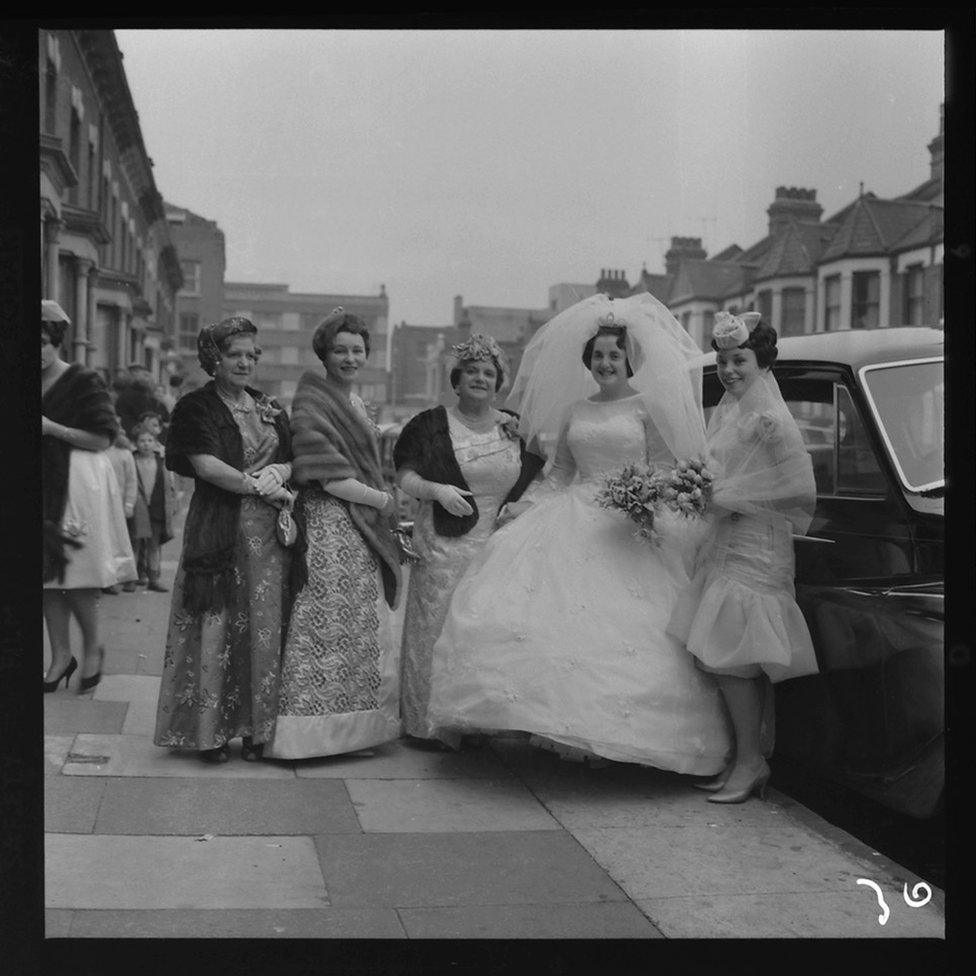

Kate Vigilant
Kate Vigilant remembers her parents telling her, one Saturday afternoon in 1977, to dress up for an outing. She thought they were going to be attending a family party but instead they made the short bus trip to Gibson's studio.
"You had the backdrop and the lovely little surroundings and setting in the photo shop," she says. "It was like being in your living room."
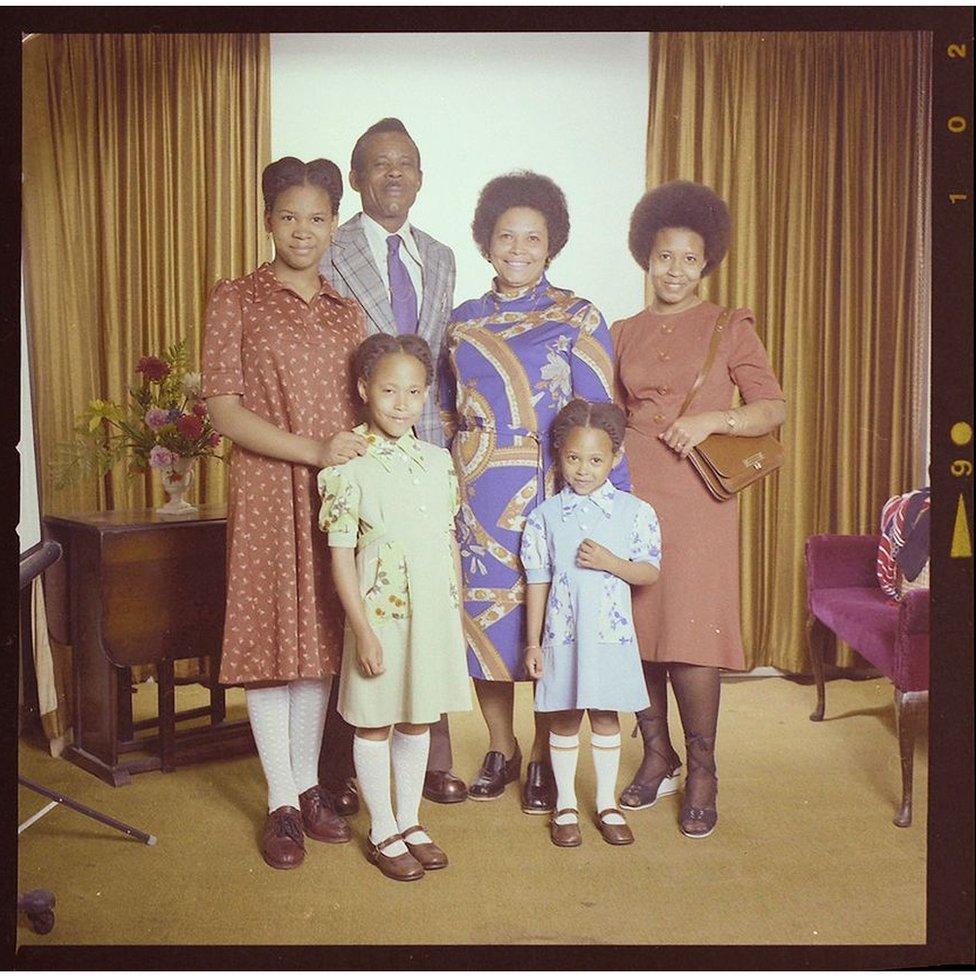

In the hot summer of 1976, at the age of 15, Kate had come to Hackney from the Caribbean island of Dominica to join the rest of her family.
Her parents had migrated in the 1960s, looking for better work opportunities, and had three more daughters in the UK.
The prints from the photo session, with Kate standing on the right, were sent to family in Dominica.
"It was nice to send home to say that we're doing really well in the UK and that the family is all together," Kate says.
Similar photos dominated Gibson's studio work in the 1970s. The formal family or graduation portrait provided relatives with a window into how things were going.
"People at home would have put it on a table where there were lots of photos and they would say, 'Oh look at them, they're looking so well, they're looking so good,'" Kate says.
These photographs, once intended as a memento for the family, now serve as a more public memento.
Flicking quickly through the archive in chronological order is like watching a time-lapse film of the changes in Hackney.
Despite those changes, it is obvious the people featured have a lot in common.
But only a handful of those photographed by Gibson have been tracked down, the stories behind the other pictures remain untold.
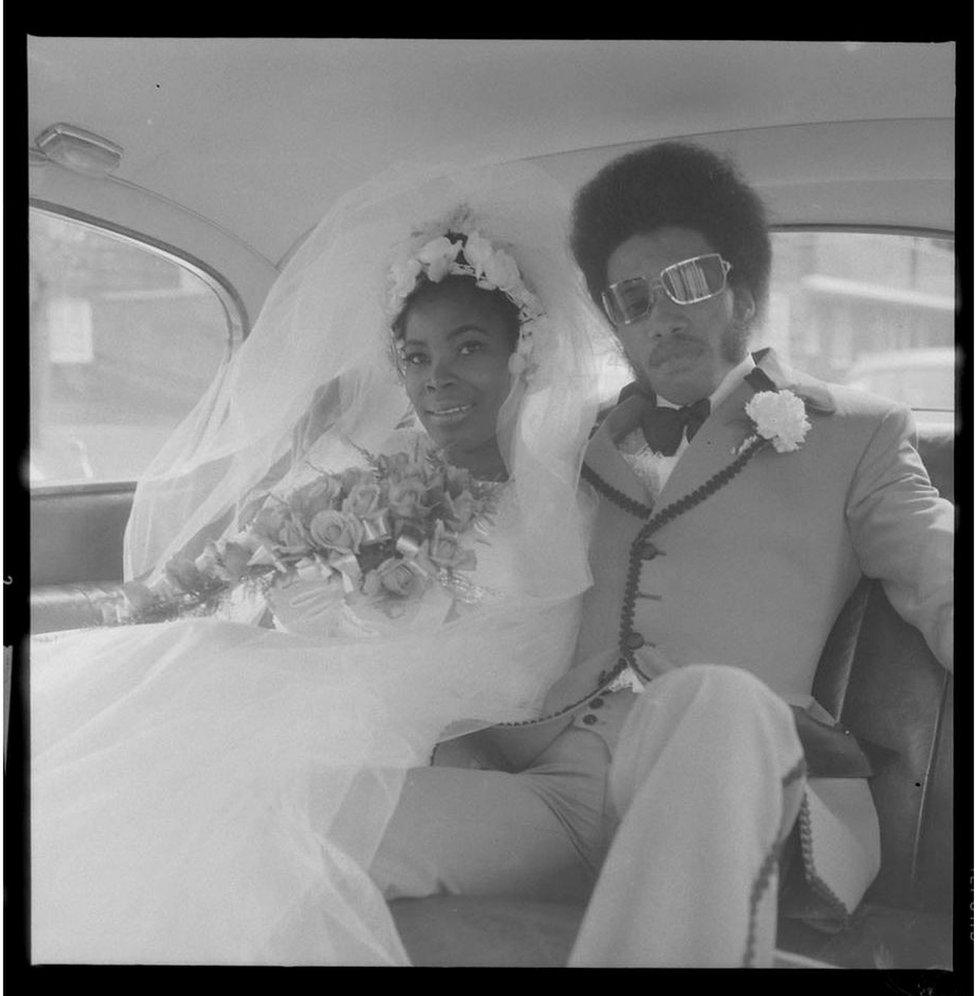

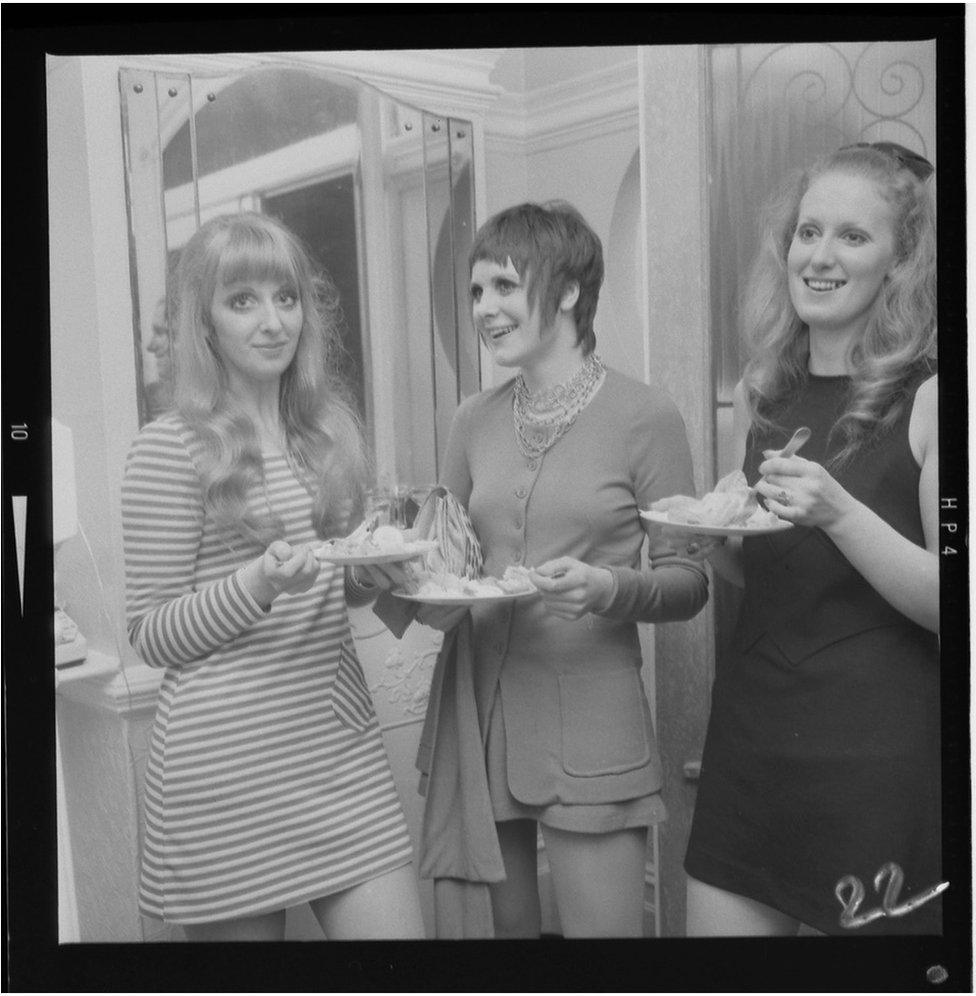





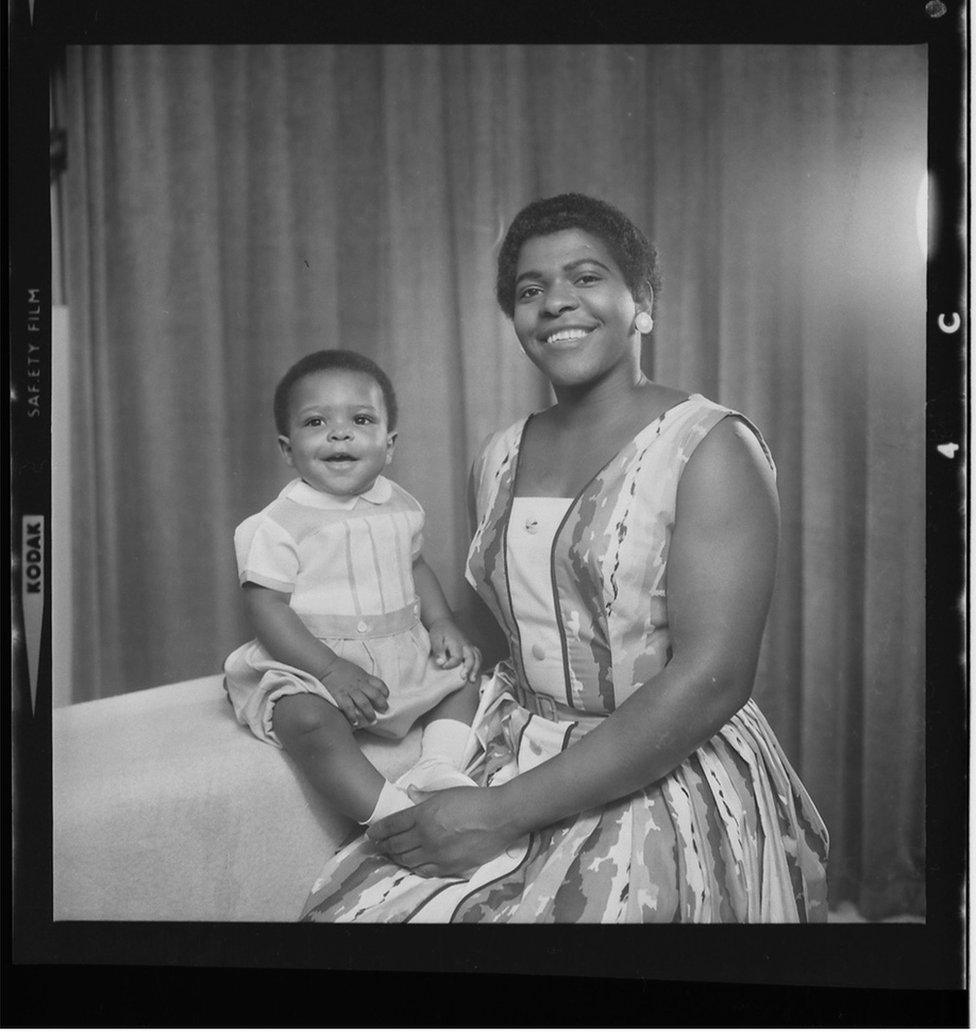

Get in touch with Hackney Archives, external, email archives@hackney.gov.uk or telephone +44 (0)20 8356 8925, if you recognise any of the people featured or you think you may have been photographed by Gibson. You can find more images on the Hackney Archives Flickr account, external.